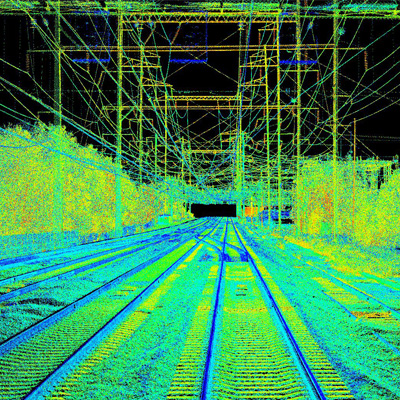EMERGENCY RESPONSE & RISK ASSESSMENTS
When every second counts, our cutting-edge aerial surveying technology becomes your most valuable ally. It’s not just about managing emergencies; it’s about staying one step ahead of them.
Post-Disaster Damage Assessment: After a disaster, fast aerial lidar and imagery acquisitions can be used to rapidly assess the extent of damage to buildings, infrastructure, and transportation networks, facilitating faster response and recovery efforts.
Natural Disaster Prediction and Mitigation: Lidar can be used to monitor environmental factors like land subsidence, river flow, and vegetation changes to predict and mitigate natural disasters, such as landslides and floods. It can also assist in evaluating the structural integrity of infrastructure, like dams and bridges, to assess their vulnerability to seismic events or flooding.
Flood Modelling: Lidar data can help create high-resolution digital elevation models (DEMs) that enable accurate flood modelling and prediction, aiding in the development of floodplain management and early warning systems.
Forest Fire Management: Lidar-equipped aircraft can be used to create 3D maps of forests and assess fuel loads, helping to plan controlled burns and manage forest fire risks. After a forest fire, lidar can be used to assess the extent of the damage and track post-fire recovery.
Landslide Risk Assessment: Lidar analysis can detect changes in terrain and topography that might indicate an increased risk of landslides. This information can be used to evacuate vulnerable areas and implement mitigation strategies.
Urban Planning and Infrastructure Resilience: Lidar data can assist in urban planning, helping cities design infrastructure that is more resilient to disasters, such as floods or earthquakes.
Overall, lidar technology and analysis tools can play a crucial role in emergency management by providing accurate and timely data for decision-making, response planning, and disaster mitigation. It enables responders to better understand the disaster’s impact and make more informed decisions, ultimately improving the effectiveness of emergency response efforts.
Common Applications
- Natural Disaster Response
- Flood Mapping
- Wildfire Management
- Post-Fire Damage Assessment
- Earthquake Impact Assessment
- Landslide and Debris Flow Monitoring
- Emergency Evacuation Planning
- Coastal and Tsunami Risk Assessment
- Critical Infrastructure Protection
Benefits of Aerial Lidar for Emergencies and Risk Management

Precision Data Collection

Swift Disaster Mapping

Real-time Monitoring

Risk Mitigation and Preparedness

Improved Search and Rescue

Environmental Impact Assessment
Find out more
Find out more about our range of Aerial Lidar services that could benefit your next project.

